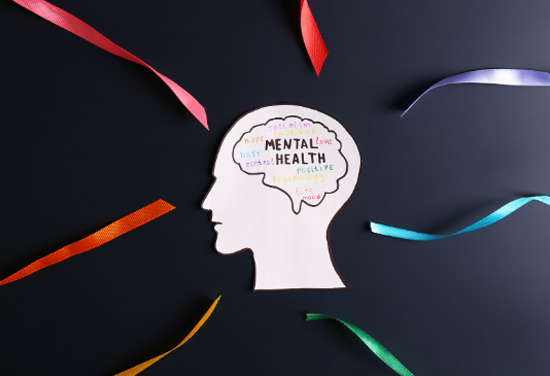
Post by : Manju Negi
World Bicycle Day, celebrated annually on June 3rd, shines a spotlight on the incredible versatility and numerous benefits of one of the most sustainable, healthy, and efficient modes of transport – the bicycle. More than just a means of getting from point A to point B, cycling offers a wealth of health benefits that can significantly improve your overall well-being. Incorporating cycling into your daily routine can truly be a life-changer for your health. Here’s why you should consider hopping on a bike and making cycling a part of your lifestyle:
1. Cardiovascular Fitness Cycling is an outstanding aerobic exercise that provides numerous benefits for your heart, lungs, and blood vessels. Here’s how regular cycling can enhance your cardiovascular health:
Heart Health: When you cycle, your heart rate increases, which strengthens your heart muscles and improves blood circulation. A stronger heart can pump blood more efficiently, reducing the strain on your cardiovascular system. This lowers your risk of heart diseases, including heart attacks and coronary artery disease.
Lower Blood Pressure: Regular cycling helps keep your blood pressure in check. By promoting better circulation and reducing the levels of bad cholesterol (LDL) in your blood, cycling helps maintain healthier blood vessels, which can prevent hypertension and lower the risk of stroke.
Improved Lung Function: Cycling also enhances lung capacity and function. As you pedal, your breathing rate increases, allowing more oxygen to enter your lungs and be distributed throughout your body. This not only improves your stamina but also supports overall respiratory health.
Boosted Blood Flow: Cycling stimulates blood flow throughout your body, delivering more oxygen and nutrients to your tissues and organs. This enhanced circulation aids in the removal of toxins and waste products, promoting overall health and vitality.
Reduced Risk of Cardiovascular Diseases: Engaging in regular cycling reduces the likelihood of developing cardiovascular diseases. Studies have shown that people who cycle regularly have a significantly lower risk of heart disease compared to those who are inactive.
Efficient Calorie Burning: Cycling is a fantastic way to burn calories, which helps in maintaining a healthy weight. Being overweight is a major risk factor for heart disease, so keeping your weight in check through cycling can significantly lower your risk of heart-related issues.
Stress Reduction: Physical activity, including cycling, helps reduce stress levels. Lower stress means less strain on your heart, which is crucial for maintaining long-term cardiovascular health. The release of endorphins during cycling also contributes to a happier and more relaxed state of mind.
Consistency is Key: To reap the cardiovascular benefits of cycling, consistency is important. Aim to cycle at a moderate intensity for at least 30 minutes most days of the week. Whether it's a leisurely ride in the park or a more vigorous commute to work, regular cycling can make a significant difference to your heart health.
Incorporating cycling into your daily routine is a simple yet powerful way to improve your cardiovascular fitness and overall health. So, grab your bike and start pedaling your way to a healthier heart!
2. Muscle Strength and Flexibility Pedaling a bicycle is a fantastic way to work out multiple muscle groups, providing a comprehensive workout for your lower body and core. Here’s how cycling helps build and tone muscles, enhancing both strength and flexibility:
Targeted Muscle Groups: When you cycle, you engage various muscles in your legs and core. Your calves work hard with each pedal stroke, your thighs (quadriceps and hamstrings) power your movements, and your glutes (buttocks) provide stability and strength. Additionally, your core muscles, including your abs and lower back, help maintain balance and posture while you ride.
Building Muscle Strength: As you pedal, the repetitive motion against resistance strengthens these muscle groups. Over time, this leads to increased muscle endurance and power. Stronger muscles mean you can ride longer and tackle more challenging terrains with ease.
Muscle Toning: Cycling not only builds muscle but also tones them, giving you a leaner and more defined physique. Regular cycling helps reduce body fat and improve muscle definition, particularly in the legs and glutes.
Enhanced Flexibility: Cycling involves continuous, rhythmic movements that enhance flexibility, especially in the legs and hips. This improved flexibility can reduce the risk of muscle strains and injuries. Stretching before and after your ride can further enhance flexibility and prevent stiffness.
Low-Impact Exercise: One of the greatest advantages of cycling is that it’s a low-impact exercise. Unlike running, which puts significant stress on your joints, cycling is gentle on your knees, ankles, and hips. This makes it an excellent option for people of all ages, including those with joint issues or arthritis.
Joint Mobility: The smooth, circular motion of pedaling promotes joint mobility, particularly in the knees and hips. Cycling encourages the production of synovial fluid, which lubricates the joints, reducing stiffness and pain.
Core Stability: Maintaining balance on a bicycle requires the engagement of your core muscles. This constant engagement helps strengthen your abs and lower back, improving overall core stability. A strong core is essential for good posture and can prevent lower back pain.
Consistency Matters: To maximize the benefits, aim for regular cycling sessions. Start with shorter, more manageable rides and gradually increase the distance and intensity. Consistency is key to building muscle strength and flexibility over time.
Variety for Better Results: Incorporate different cycling routes and terrains into your routine. Hill climbs, interval training, and long-distance rides can all challenge your muscles in different ways, leading to better overall fitness and muscle development.
Incorporating cycling into your fitness routine is a smart and effective way to enhance muscle strength and flexibility while enjoying a low-impact, joint-friendly workout. So, get on your bike, start pedaling, and watch your muscles transform!
3. Weight Management Cycling is an excellent way to burn calories and manage your weight. Whether you’re aiming to shed a few pounds or maintain your current weight, hopping on a bike can be a fun and effective part of your fitness routine. Here’s why cycling is great for weight management:
Calorie Burning Power: Cycling is a high-calorie-burning activity. Depending on your intensity and duration, you can burn anywhere from 400 to 1000 calories per hour. A leisurely ride burns fewer calories, while a vigorous, high-speed ride or uphill cycling can significantly increase your calorie expenditure.
Boosts Metabolism: Regular cycling helps boost your metabolism, even when you’re not riding. As you build muscle from cycling, your resting metabolic rate increases, meaning you burn more calories even at rest. This makes it easier to manage your weight over the long term.
Cardio and Strength Combo: Cycling provides both cardiovascular and strength training benefits. This combination helps in reducing body fat and building lean muscle mass. Lean muscle is more metabolically active than fat, which helps in burning more calories throughout the day.
Low Impact, High Benefit: Unlike many high-impact exercises, cycling is gentle on your joints, making it a sustainable option for regular exercise. This means you can cycle frequently without the risk of injury that comes with more strenuous activities, helping you stay consistent with your weight management goals.
Appetite Control: Regular physical activity like cycling can help regulate your appetite. Exercise influences the hormones that control hunger, making it easier to avoid overeating. After a good cycling session, you’re more likely to crave healthy, nutritious foods that fuel your body properly.
Improves Insulin Sensitivity: Cycling regularly helps improve your body’s insulin sensitivity, which means your body is better at using insulin to convert glucose into energy. This can help in managing and preventing type 2 diabetes, and also assists in maintaining a healthy weight.
Mental Health Boost: Weight management isn't just about physical activity; mental well-being plays a crucial role too. Cycling can help reduce stress, anxiety, and depression by releasing endorphins, the body’s natural mood lifters. A positive mental state can lead to better food choices and a more active lifestyle.
Setting Goals: To get the most out of cycling for weight management, set realistic and achievable goals. Start with short rides and gradually increase your distance and intensity. Tracking your progress can keep you motivated and help you stay committed to your weight management plan.
Pair with a Balanced Diet: While cycling burns calories, pairing it with a balanced diet is essential for effective weight management. Focus on eating nutrient-dense foods like fruits, vegetables, lean proteins, and whole grains. Avoid high-sugar and high-fat foods that can negate your efforts.
Consistency is Key: Make cycling a regular part of your routine. Aim to cycle at least 3-5 times a week for the best results. Whether it’s a short ride around the neighborhood or a longer weekend adventure, regular cycling can make a significant difference in your weight management journey.
Incorporating cycling into your daily routine is a powerful way to manage your weight effectively. With its ability to burn calories, boost metabolism, and improve overall fitness, cycling is an enjoyable and sustainable way to achieve and maintain a healthy weight. So, grab your bike, hit the road, and start pedaling your way to better health!
4. Improved Joint Mobility Cycling is a fantastic exercise for enhancing joint mobility, especially in the knees, hips, and ankles. Here’s how cycling can help keep your joints healthy and flexible:
Smooth, Circular Motion: Unlike high-impact exercises that can put a strain on your joints, cycling involves smooth, circular motions. This gentle action helps to move the joints without causing stress, making it an excellent choice for people with joint issues or arthritis.
Production of Synovial Fluid: When you cycle, the repetitive motion of pedaling encourages the production of synovial fluid. This fluid acts as a lubricant for your joints, reducing friction and preventing stiffness. By keeping the joints well-lubricated, cycling helps to reduce pain and improve overall joint function.
Enhanced Range of Motion: Regular cycling can increase the range of motion in your knees, hips, and ankles. As you pedal, you flex and extend these joints, which helps to keep them flexible and functional. Improved range of motion can lead to better mobility and less discomfort in daily activities.
Strengthening Surrounding Muscles: Cycling strengthens the muscles around your joints, providing better support and stability. Strong muscles help to take some of the pressure off the joints, reducing the risk of injury and joint degeneration.
Low-Impact Exercise: Because cycling is a low-impact activity, it’s easier on the joints compared to high-impact exercises like running or jumping. This makes cycling an ideal exercise for older adults, people recovering from injuries, or anyone with chronic joint pain.
Arthritis Relief: For individuals with arthritis, cycling can be particularly beneficial. The gentle, non-weight-bearing nature of cycling helps to reduce joint pain and inflammation. Regular cycling can also prevent further joint damage by keeping the joints moving and the muscles around them strong.
Consistency Matters: To see the benefits, it’s important to cycle regularly. Even short, daily rides can make a big difference in joint health. Start with easy rides and gradually increase the duration and intensity as your joints become more flexible and your muscles stronger.
Prevents Joint Stiffness: Staying active through cycling can prevent joint stiffness that often comes with a sedentary lifestyle. Regular movement keeps the joints flexible and helps to maintain their health and functionality.
Rehabilitation and Recovery: Cycling is often recommended as part of rehabilitation programs for joint injuries. The controlled, low-impact nature of cycling allows individuals to rebuild strength and mobility without risking further damage.
Tips for Joint-Friendly Cycling:
Incorporating cycling into your fitness routine can significantly improve joint mobility, making daily activities easier and more comfortable. Whether you’re dealing with arthritis, recovering from an injury, or simply looking to keep your joints healthy, cycling offers a low-impact, effective solution. So, hop on your bike and enjoy the benefits of better joint health and improved mobility!
1. Stress Reduction Cycling is an excellent way to reduce stress and improve your overall mental well-being. The combination of physical activity, fresh air, and scenic views provides a powerful antidote to the pressures of everyday life. Here’s how cycling helps in reducing stress and enhancing mental clarity:
Release of Endorphins: When you cycle, your body releases endorphins, often referred to as the body's natural mood lifters. These chemicals interact with receptors in your brain to reduce your perception of pain and trigger a positive feeling in the body, similar to that of morphine. This endorphin boost can help alleviate stress and create a sense of well-being and happiness.
Rhythmic Motion: The repetitive, rhythmic nature of cycling can be incredibly soothing. It allows your mind to settle into a meditative state, similar to the effects of yoga or tai chi. This steady motion helps distract your mind from stressors and promotes relaxation.
Outdoor Enjoyment: Cycling outdoors allows you to connect with nature. Whether you’re riding through a park, along a river, or down a country road, the natural surroundings can have a calming effect. Exposure to sunlight also helps regulate your circadian rhythm, improving your sleep patterns and overall mood.
Mental Clarity: Regular cycling can enhance your mental clarity and cognitive function. The increased blood flow to your brain during physical activity helps improve memory, concentration, and creativity. Many cyclists find that they can think more clearly and solve problems more effectively after a ride.
Social Interaction: Cycling can be a social activity. Joining a cycling group or riding with friends can provide a sense of community and support. Social interactions during group rides can reduce feelings of loneliness and isolation, contributing to better mental health.
Routine and Structure: Establishing a regular cycling routine can provide structure and a sense of purpose. Knowing that you have a scheduled time to ride can give you something to look forward to and can help manage stress by breaking up your day with a healthy activity.
Physical Health Benefits: Improved physical health through cycling can lead to better mental health. Regular exercise reduces the risk of developing chronic conditions like heart disease and diabetes, which can be sources of stress and anxiety. Feeling physically healthy boosts self-esteem and confidence, contributing to a more positive outlook on life.
Mindfulness and Presence: Cycling requires you to focus on your surroundings and the act of riding itself. This focus can serve as a form of mindfulness, keeping you present in the moment and helping you let go of worries about the past or future.
Tips for Maximizing Stress Reduction:
Incorporating cycling into your daily routine is a highly effective way to manage stress, improve mental clarity, and boost your overall emotional well-being. So, get on your bike, enjoy the ride, and let the stress melt away!
2. Enhanced Cognitive Function Regular physical activity, including cycling, is a fantastic way to boost your brain health. Here’s how cycling enhances cognitive functions like memory, concentration, and problem-solving skills, and helps reduce the risk of cognitive decline and diseases such as Alzheimer’s:
Increased Blood Flow to the Brain: When you cycle, your heart rate increases, pumping more blood and oxygen to your brain. This increased blood flow stimulates brain cells and promotes the growth of new neurons, enhancing overall brain function.
Improved Memory: Regular cycling can improve your memory. The increased blood flow helps nourish the hippocampus, the part of the brain responsible for memory and learning. This can lead to better retention of information and quicker recall.
Enhanced Concentration: Cycling requires focus and coordination, which can help sharpen your concentration skills. The rhythmic and repetitive nature of cycling can also induce a meditative state, clearing your mind and helping you stay focused on the task at hand.
Better Problem-Solving Skills: The physical activity involved in cycling can boost your problem-solving abilities. The brain releases neurotransmitters like dopamine and serotonin during exercise, which are linked to improved mood and cognitive function. This makes you more creative and better equipped to tackle challenges.
Reduced Risk of Cognitive Decline: Regular physical activity like cycling is associated with a lower risk of cognitive decline as you age. Studies have shown that people who engage in regular exercise are less likely to develop dementia and Alzheimer’s disease. The brain benefits from the same cardiovascular improvements that help keep your heart healthy.
Mental Sharpness: Cycling can help keep your mind sharp. The complex coordination required to balance, steer, and navigate while cycling engages multiple brain areas, enhancing their function and keeping your cognitive abilities in top shape.
Stress Reduction: Stress is known to have a negative impact on cognitive function. By reducing stress through regular cycling, you can protect your brain from the harmful effects of chronic stress. Lower stress levels mean better cognitive performance and mental clarity.
Improved Mood: Cycling releases endorphins, which can enhance your mood and create a positive mental state. A good mood is conducive to better cognitive function, as it reduces anxiety and depression, which can interfere with your ability to think clearly.
Consistency is Key: To enjoy the cognitive benefits of cycling, consistency is crucial. Aim for regular rides, whether it’s daily or several times a week. Even short rides can make a big difference in maintaining and improving brain health.
Engage in Varied Cycling Routines: Mixing up your cycling routine can further enhance cognitive benefits. Try different routes, vary your pace, and incorporate both short, intense rides and longer, leisurely ones to keep your brain engaged.
Social and Recreational Aspect: Cycling with friends or joining a cycling club can add a social dimension to your rides. Social interactions are beneficial for cognitive health, providing mental stimulation and reducing feelings of isolation.
Incorporating cycling into your routine is a powerful way to boost your brain health and enhance cognitive functions. The combination of increased blood flow, reduced stress, and improved mood can lead to sharper memory, better concentration, and enhanced problem-solving skills. So, grab your bike, hit the road, and give your brain the workout it needs to stay healthy and sharp!
3. Boosted Mood and Self-Esteem Cycling is more than just a physical activity; it’s a powerful tool for improving your mood and self-esteem. Here’s how hopping on a bike can positively impact your mental health and overall happiness:
Achieving Fitness Goals: Setting and reaching cycling goals can give you a tremendous sense of accomplishment. Whether it’s cycling a certain distance, climbing a challenging hill, or simply riding regularly, each milestone you achieve boosts your confidence. This sense of achievement can spill over into other areas of your life, enhancing your overall self-esteem.
Enjoying the Ride: The sheer enjoyment of riding a bike can lift your spirits. The wind in your hair, the sun on your face, and the thrill of speed can make you feel alive and invigorated. This joy and freedom can have an immediate positive impact on your mood, making you feel happier and more relaxed.
Freedom of Movement: Cycling provides a sense of freedom and independence. You can explore new places, discover scenic routes, and enjoy the beauty of nature at your own pace. This sense of freedom can be incredibly empowering, boosting your mood and self-worth.
Endorphin Release: Physical activities like cycling stimulate the release of endorphins, the body’s natural mood enhancers. These endorphins interact with the brain’s receptors, reducing pain perception and triggering positive feelings. This natural high can help combat feelings of stress, anxiety, and depression.
Social Connections: Cycling can be a social activity. Joining a cycling group or riding with friends and family can provide social interaction and support. These connections are vital for mental health, reducing feelings of loneliness and enhancing your sense of belonging.
Stress Relief: Cycling is a great way to reduce stress. The rhythmic motion of pedaling, combined with the calming effect of being outdoors, can help clear your mind and reduce tension. Lower stress levels contribute to a more positive mood and better mental health.
Increased Energy Levels: Regular cycling boosts your energy levels, making you feel more alert and energetic throughout the day. This increase in energy can improve your mood and help you tackle daily tasks with a more positive attitude.
Improved Sleep: Better sleep is another benefit of regular cycling. Good quality sleep is essential for mental health and overall well-being. When you sleep well, you wake up feeling refreshed and ready to face the day, which can enhance your mood and outlook on life.
Building Resilience: Overcoming challenges on the bike, such as tough climbs or long distances, builds resilience. This mental toughness can translate to other areas of your life, helping you face and overcome personal challenges with greater confidence.
Routine and Structure: Establishing a regular cycling routine provides structure to your day. This sense of routine can be comforting and help create a balanced, healthy lifestyle. Knowing you have a scheduled time to ride can give you something to look forward to, enhancing your overall happiness.
Tips for Maximizing Mood and Self-Esteem Benefits:
1. Social Interaction Cycling isn't just about pedaling; it's also about connecting with others and building a sense of community. Here's how cycling can become a social activity that enhances your overall experience:
Bonding with Friends and Family: Cycling provides a fantastic opportunity to spend quality time with friends and family. Whether it's a leisurely ride around the neighborhood or an adventurous trip through scenic trails, cycling together strengthens bonds and creates lasting memories.
Joining Cycling Clubs: Cycling clubs are hubs of social interaction for enthusiasts of all levels. Joining a club allows you to meet like-minded individuals who share your passion for cycling. You can participate in group rides, attend events, and exchange tips and experiences with fellow cyclists.
Community Engagement: Cycling events and fundraisers often bring together communities for a common cause. Whether it's a charity ride, a cycling marathon, or a local cycling festival, these events provide opportunities to connect with others, support worthy causes, and celebrate the joy of cycling.
Support and Motivation: Riding with others can provide invaluable support and motivation. Encouraging words from fellow cyclists can help you push through challenging terrain or achieve personal fitness goals. The camaraderie and sense of solidarity that come from riding together can inspire you to go further and faster than you thought possible.
Shared Experiences: Cycling in a group allows you to share experiences and stories along the way. Whether it's swapping route recommendations, sharing tips on bike maintenance, or recounting memorable rides, these shared experiences deepen friendships and foster a sense of belonging.
Sense of Belonging: Being part of a cycling community gives you a sense of belonging. You're connected to a group of individuals who share your passion and understand the joys and challenges of cycling. This sense of belonging can boost your confidence, reduce feelings of isolation, and enhance your overall well-being.
Fun and Enjoyment: Cycling with others is simply more fun. Laughter, camaraderie, and shared experiences make every ride an adventure to be cherished. Whether you're exploring new trails, tackling challenging climbs, or cruising along scenic routes, the shared joy of cycling creates memories that last a lifetime.
2. Eco-Friendly Transportation Opting for a bicycle as your mode of transportation isn't just about getting from point A to point B – it's about making a conscious choice to reduce your environmental impact and promote sustainability. Here's how cycling contributes to a cleaner, healthier planet:
Reduced Carbon Footprint: Choosing to cycle instead of driving for short trips significantly reduces your carbon footprint. Unlike cars, bicycles produce zero emissions, helping to mitigate the harmful effects of greenhouse gases on the environment. By pedaling instead of driving, you're taking a small but meaningful step towards combating climate change.
Promoting Clean Air: Cycling helps improve air quality by reducing the amount of pollution emitted by vehicles. Cars and trucks are major contributors to air pollution, releasing pollutants such as carbon monoxide, nitrogen oxides, and particulate matter into the atmosphere. By opting for a bike, you're choosing a mode of transportation that doesn't contribute to air pollution, leading to cleaner and healthier air for everyone.
Alleviating Traffic Congestion: Cycling helps alleviate traffic congestion on roads and highways. With more people choosing to cycle, there are fewer cars on the road, resulting in smoother traffic flow and reduced congestion. This not only saves time for cyclists but also reduces fuel consumption and greenhouse gas emissions associated with idling vehicles.
Preserving Natural Resources: Bicycles require fewer resources to manufacture and maintain compared to motor vehicles. Building a bike produces significantly fewer emissions and consumes less energy and materials than manufacturing a car. Additionally, bicycles have a longer lifespan and can be easily repaired and recycled, further reducing their environmental impact.
Supporting Sustainable Urban Development: Investing in cycling infrastructure, such as bike lanes, paths, and parking facilities, promotes sustainable urban development. Cycling-friendly cities are more livable, with cleaner air, less noise pollution, and safer streets for pedestrians and cyclists alike. By advocating for cycling infrastructure, you're advocating for a more sustainable and equitable transportation system.
Improving Public Health: Cycling has numerous health benefits, including reducing the risk of chronic diseases like obesity, diabetes, and heart disease. By promoting cycling as a mode of transportation, communities can encourage physical activity and improve public health outcomes. Healthier individuals mean reduced healthcare costs and a more productive workforce, contributing to overall societal well-being.
Building Community Connections: Cycling fosters a sense of community and connection among individuals. Shared bike paths, group rides, and cycling events bring people together, promoting social interaction and solidarity. By cycling together, communities can strengthen bonds, support local businesses, and create vibrant, resilient neighborhoods.
Encouraging Sustainable Behavior: Choosing to cycle sends a powerful message about the importance of sustainable transportation. By leading by example and advocating for cycling as a viable mode of transportation, you inspire others to make eco-friendly choices and contribute to a more sustainable future.
Summary: In this comprehensive guide, we explore the process of selecting the perfect bicycle tailored to individual needs and preferences. From road bikes built for speed and efficiency to rugged mountain bikes designed for off-road adventures, and versatile hybrid bikes that offer a bit of both, there's a bike to suit every rider. Emphasizing the importance of getting the right fit and considering factors like riding style, terrain, and additional features, the article provides practical tips for choosing a bicycle that ensures a comfortable and enjoyable ride. It also highlights the significance of regular maintenance and care to keep the bike in optimal condition for long-term use.
Disclaimer by DXB News Network: DXB News Network provides this guide for informational purposes only. While we strive to offer accurate and up-to-date information, readers are encouraged to consult with a professional bike fitter or bicycle retailer for personalized advice and recommendations. Additionally, DXB News Network is not responsible for any injury, loss, or damage resulting from the use or misuse of the information provided in this guide. Readers should exercise caution and follow safety guidelines when selecting and riding bicycles.

PM Modi Lays ₹6,300 Crore Projects in Assam Criticizes Congress
PM Modi accuses Congress of backing infiltrators lays ₹6,300 crore health and infrastructure project

Nepal President Dissolves Parliament Parties Call Move Unconstitutional
Nepal’s President dissolves Parliament, sparking criticism from major political parties and lawyers

Turkey fears becoming next target after Israel strike
Turkey warns Israel may expand attacks after strike on Hamas in Qatar. Tensions rise as Erdogan stre

How AI Is Transforming Banking From Smarter Risk Models to Virtual Financial Advisors
Explore how AI is reshaping banking with smarter risk models virtual advisors personalized service

Fatal Shooting of Conservative Activist in Utah College
Authorities investigate Utah college shooting that killed activist Charlie Kirk. Suspect arrested fa

MBZUAI Leads UAE’s Global AI Ambitions with New Student Programs
UAE’s MBZUAI advances AI education with new undergraduate, graduate programs and research shaping na

4.9 Magnitude Earthquake Strikes Near Sinabang Indonesia
A shallow 4.9 earthquake shakes western Sinabang Indonesia. Authorities report no major damage but w

How AI Is Transforming Banking From Smarter Risk Models to Virtual Financial Advisors
Explore how AI is reshaping banking with smarter risk models virtual advisors personalized service

From $6.5 Trillion to $7.5 Trillion The New Era of Global Banking Growth
Global banking revenues set to rise from $6.5T in 2023 to $7.5T by 2027 driven by digital growth i

Global Banking 2025 A New Era of Technology Trust and Transformation
Discover how global banking in 2025 is being transformed by AI digital finance green banking and

Alibaba Unveils Smaller AI Model Matching Larger Ones Efficiently
Alibaba launches a new AI model that is smaller, faster, and cheaper but performs as well as larger

Fujairah Hosts Sixth Round of Khaled Bin Mohamed Jiu-Jitsu Championship
Over 1,600 young athletes compete in Fujairah as Baniyas Club tops rankings at the sixth round of Kh

UAE Tops Global Competitiveness Rankings and Shows Strong Growth
UAE ranks among the world’s top nations in competitiveness, innovation, health, and safety, leading

UAE rowers win silver and bronze at Asian Beach Sprint Finals
UAE rowing team wins silver and bronze at the Asian Rowing Beach Sprint Finals 2025 in China marking

UN chief condemns Haiti gang attack that killed over 40 people
UN chief denounces brutal gang attack in Haiti killing 40 calls for urgent global support to help re